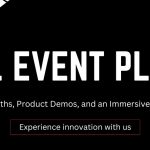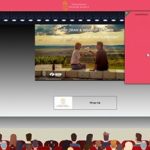The Future of Events is not Webinars: Why outdated formats are holding us back
For years, digital events have leaned heavily on a single format: the webinar. Introduced as a quick solution for virtual communication, webinars once served a purpose. However, in today’s rapidly evolving tech trends, they have become a symbol of everything audiences are growing tired of.
Despite the proliferation of platforms and tools, the same tired formats persist: A deck of slides. A one-sided talk. A chat window nobody engages with.
But here’s the truth: most digital events feel forced, repetitive, and uninspiring.
It’s Not the Audience, it’s the Format
Some blame it on shorter attention spans. Others claim Gen Z is difficult to engage. However, the real issue isn’t the audience; it’s the outdated structure of most virtual events.
Today’s audiences are not disengaged by default. On the contrary, they’re more curious, socially aware, and creativity-driven than ever before. What they reject are events that feel irrelevant, impersonal, or inauthentic.
In other words, it’s not that people don’t want to attend events, they simply don’t want to waste their time at ones that don’t respect their attention.
Why Traditional Events Are Falling Short
To better understand why change is necessary, let’s break down where conventional event formats are failing.
1. They Prioritise Flash Over Substance
First and foremost, too many events focus on appearances. Brands often prioritise highly produced visuals and trending speakers, believing this alone will guarantee engagement. But what today’s audience craves is authenticity — not empty polish.
2. They Drain Attention Instead of Feeding Curiosity
Furthermore, webinars are inherently passive. Attendees are expected to sit quietly and absorb information. However, in an era where people thrive on interaction and participation, this format falls flat. There is little stimulation, no creative challenge, and minimal room for exploration.
3. They Miss the Opportunity to Build Real Community
In addition, the networking elements built into traditional virtual platforms often feel contrived. Breakout rooms and icebreakers are rarely effective, as they lack depth and context. Instead of fostering connection, they create discomfort or, worse, complete disengagement.
So What Do People Actually Want?
Given these shortcomings, it’s no surprise that people are gravitating toward more dynamic and meaningful experiences. But what does that actually look like?
- Experiences that reflect who they are, rather than treating them as passive viewers
- Technology that enhances mental clarity and creativity, not just demands attention
- Events that inspire, not just inform
- Communities built on shared interests and relevance, not algorithmic pairings
Simply put, people want events that feel human again.
VEP: Currating Events that are Authentic
This is where VEP (Virtual Experience Platform) comes in. Rather than offering just another webinar tool, VEP represents a fundamental shift in how virtual experiences are conceived, designed, and delivered.
Let’s explore what sets VEP apart — and why it represents the future of events.
1. From Passive Viewers to Active Participants
To begin with, VEP defines what engagement means. Rather than asking attendees to sit through pre-scripted sessions, we enable them to participate, interact, and co-create the experience. This transformation leads to higher energy, better retention, and real involvement.
2. Technology That Enhances, Not Exhausts
Moreover, we believe that technology should sharpen your thinking, not dull it. While many platforms focus on holding attention at any cost, VEP prioritises cognitive stimulation. This means dynamic formats, intelligent pacing, and interactive features designed to activate curiosity and creative problem-solving.
3. Fun as a Tool for Engagement
Contrary to outdated beliefs, fun is not a distraction — it’s a strategic asset. Events that incorporate creative, playful elements are more memorable, and often, more effective. VEP supports gamified sessions, co-creation spaces, and interactive formats that make learning and collaboration feel rewarding, not burdensome.
4. Networking That Feels Natural
Instead of relying on random breakout rooms or generic prompts, VEP offers intentional networking opportunities based on shared values, interests, and expertise. This creates space for genuine connections to form, without the awkwardness.
5. Long-Term Community Building
Lastly, VEP is not just about events — it’s about ecosystems. We help organisations cultivate ongoing communities, not one-time attendees. Events are designed to enhance meaningful follow-up, continuous learning, and organic growth. That’s how real engagement and loyalty are built.
Why This Change Matters Now
Now more than ever, attention is a privilege, not a guarantee. With so much digital content competing for time and space, audiences are growing more selective. They want experiences that respect their intelligence, align with their values, and add something real to their day.
Continuing to offer the same one-directional webinars only pushes people further away. Therefore, the question becomes: What are you building, another content dump, or a true experience?
The Future of Events Is Human, Creative, and Interactive
The future of events is not a webinar. It’s not another slide deck. It’s not another scripted panel or awkward Q&A. Instead, the future belongs to events that are:
- Interactive by design
- Cognitively stimulating
- Creatively engaging
- Community-centered
That’s the future VEP is building — and it’s already happening.
Ready to Create Events People Actually Want to Attend?
If you’re ready to stop settling for uninspired formats and start delivering events that matter, VEP is the platform to help you do it, and AVIANET offers the support you need to host your events.
Let’s create experiences that spark minds, build relationships, and make people want to come back.
Read more:
Before the Next Big Leap: A Look at the VEP You Trust – AVIANETVEP

